Made in the Future
Colin Raney of IDEO explains the inner-workings of their side project—made possible with help from MIT Media Lab

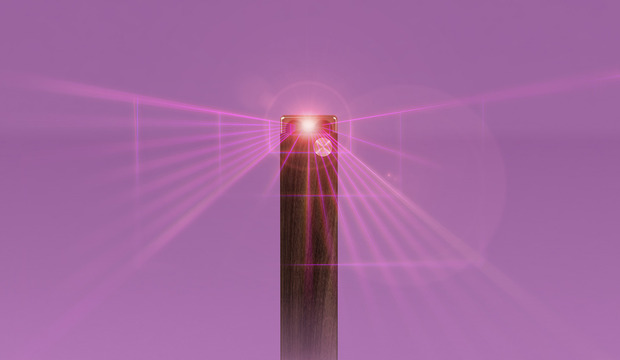
Hardcore sci-fi writers, NASA researchers and even government policymakers are tasked with dreaming up the next century’s goals for mankind, but cult design consulting firm IDEO wanted to explore a “not-so-distant” future from a designer’s perspective. As a company that’s always looking ahead, their “Made in the Future” project imagines how we will be “making” five or 10 years from now, guided by their belief that the act of making is part of what makes us human. How do we become better versions of ourselves using the latest innovations in technology, without losing grasp of our human nature?
With IDEO designers dedicating time between client projects—with CEO Tim Brown participating—”Made in the Future” is the result of a year’s worth of brainstorms, interviews and field trips, presented in an approachable and playful manner. They’ve analyzed innovations in designing, manufacturing and distributing, and ponder the direction making is headed in.
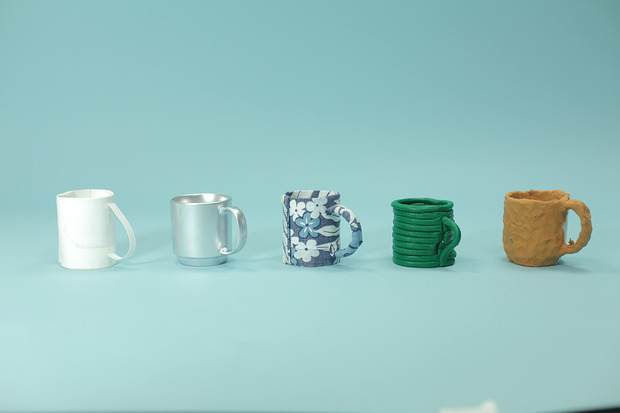
With much of the work taking place at their Boston office, the designers took advantage of their close proximity to MIT Media Lab and spent time with the “edges of technology” the student and faculty researchers are exploring. Living on its own website, “Made in the Future” is a clean visualization, with bright colors and short demo videos. Its nature is curious and open-minded—not taking itself too seriously or looking overly sterile and futuristic, as to be usable now. Five distinct themes (Meaning Economy, Making Exchanges, Outer Skills, Raw Systems and New Matter) read like mini-storytelling sessions that end with thought-provoking questions. For example, as technology advances and smart tools are able to teach us skills, how can we retain originality? Can we co-create nature, treating it as an equal partner—perhaps even turn pests like termites into partners?
As any designer knows, the “process” is often just as eye-opening as the final product—so we spoke with Colin Raney (associate partner and Managing Director of the Boston studio) to learn about how IDEO approaches these kinds of discussion-based projects that lean towards the intangible. (And if you haven’t yet, we highly recommend checking out this ABC Nightline video from 1999 that gives an in-depth look at IDEO’s unique product development process).
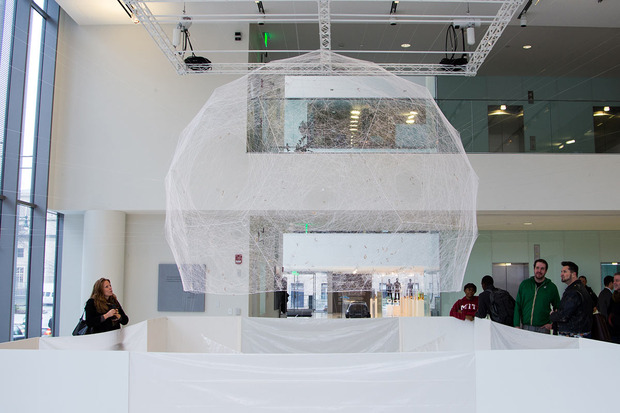
Where did you begin?
Thinking about making things in the future hits on some pretty important topics: education, collaboration, economics, and the role of creativity.
To kick things off, we spent three weeks learning from experts and everyday users. For example, we’d spend time with a father and son chatting about their weekend crafts and hobbies which included building model planes. We wanted to understand what role people wanted to play in the process of making things. Then we would interview experts to understand how technology might evolve and what role it would play in the future. We talked with a large number of researchers and professors in the Boston area. We interviewed Neri Oxman, at the MIT Media Lab, who has been exploring how to design with nature and was making large structures with silkworms.
Research completed, we started to look for the major themes we wanted to explore. You quickly see that thinking about making things in the future hits on some pretty important topics: education, collaboration, economics and the role of creativity.
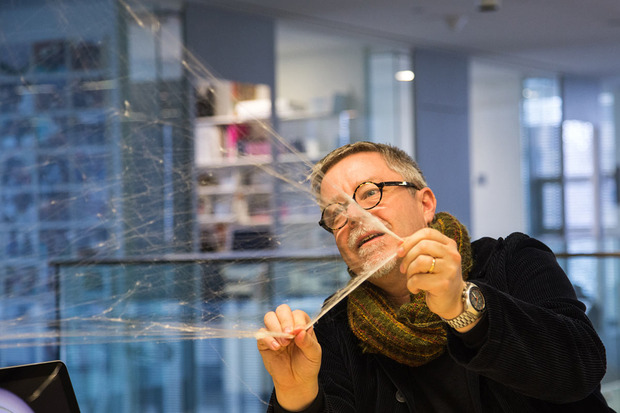
Through this process we’d find ourselves faced with certain questions. For example, “What would happen if factories came to you instead of shipping goods around the world?” Or, “Could a device simulate the same exchange between a master and an apprentice?” Then we explored those questions through design. Thinking about all the technology we’d been exposed to, we tried to design the answer. This is how we ended up with a concepts like Trailer Towns and Masters Archive.
The the final part was just the production. But that was a lot of fun because we built everything from the site’s framework to everything in it. We scripted it, shot it, coded it—one of our designers, Matt Brown, even wrote the music. Doing the production was important because we wanted it to have a playful tone and feel. Sometimes designing for the future can get too serious and futuristic.
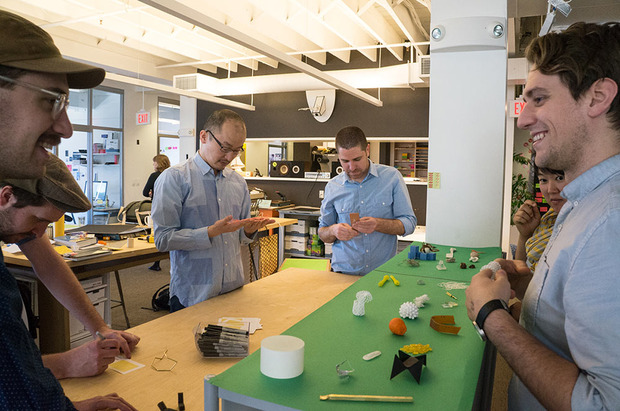
What are the brainstorm sessions like? It looks like you start with great examples, from the Shadow dream app to self-assembling robots.
Much of the early evidence came from conversations we had with experts in the field. We needed to connect with those experts so that we could understand the dynamics of the different technologies; would they grow fast? What were the barriers that keep people from adopting different ideas? We wanted to add the “Early Evidence” examples to help people see how different technologies were appearing in the world. William Gibson has this great often-quoted phrase: “The future is already here—it’s just not very evenly distributed.” Along those lines, we were interested in other places these ideas were appearing.
Is “Made in the Future” going to be a living site, with updates in the future? I noticed “To be continued” written at the end of New Matters.
We’re not completely certain yet. There were a lot of areas that we weren’t able to cover, but there’s already quite a bit of content on the site. Through this whole process, we ended up in some really incredible conversations wondering about the benefits and the pitfalls of technology. I think workshops or conversation series that would allow us to share that experience with more people could be interesting.
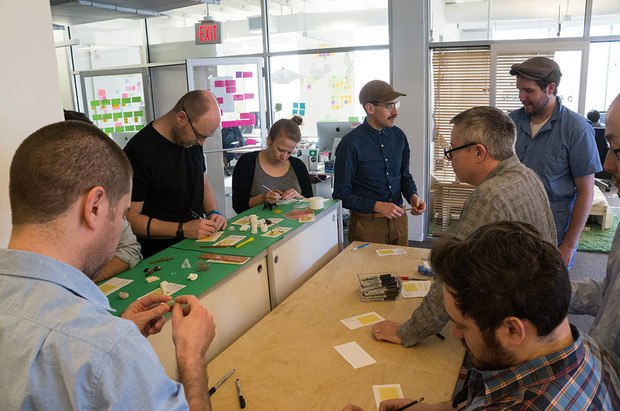
Since “Made in the Future” focuses on these benefits, could you elaborate on the “pitfalls of technology” you discussed?
It wasn’t really a critique in technology; we just wanted to get to something that was optimistic and inspiring.
We were approaching technology from a pretty neutral space—what could it do? How could it make our lives more interesting, inspiring? And as we got deeper into the designs, we might end up with something that didn’t feel that interesting or helpful—technology for technology’s sake. When this happened, we’d rev the concept, working with it to get to something exciting. So in this way, it wasn’t really a critique in technology—we just wanted to get to something that was optimistic and inspiring.
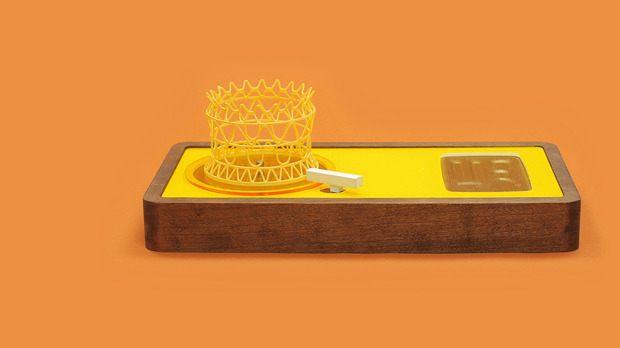
It looks like the project is a great tool especially for design students or budding designers who might be stuck in more of a “what can we design now” type of mindset. What advice would you offer?
It’s a great way to think about finding inspiration and just trying to make things you think people will like. There’s definitely a lot of constraints to work with: how fast will technology advance, how can the specific concepts be helpful. It’s also a fun exercise in storytelling. If you just designed the object alone, it would be difficult to get engagement. But by framing the concept within a story that asks bigger questions, hopefully we help people think about the way things might evolve. That’s probably the most important part of the exercise.
Images courtesy of IDEO











